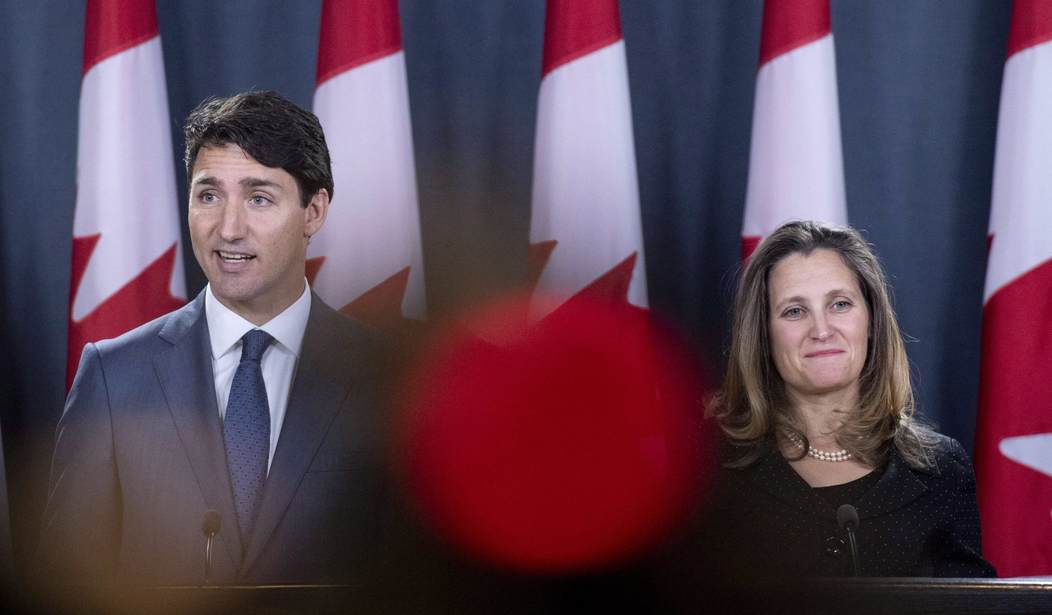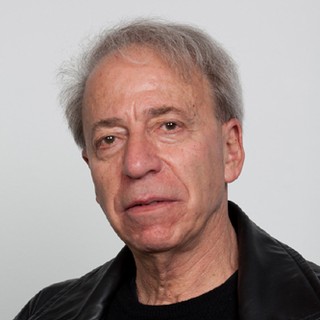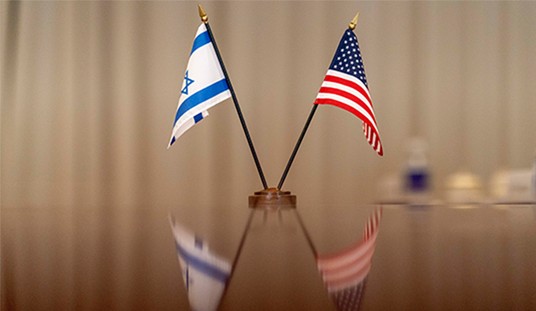Canada’s Social Justice agenda did not fare well in the renegotiated NAFTA deal, rebranded as the U.S.-Mexico-Canada Agreement (USMCA). A chapter dedicated to gender rights, something Canada pushed hard for, was not incorporated into the Agreement. Trump would have no part of it.
The exclusion makes good sense since special gender privileges for women, the spawn of hard-core feminism, have nothing to do with economic issues, tariffs or trade and manufacturing reciprocities.
Equally significant, a separate chapter on Indigenous Rights failed to make the cut, a serious blow to the aboriginal resistance movement which has become a rallying cry not only for Native activists but for the Canadian political, media and academic elites. These latter are committed to abrogating national jurisdictions and dismantling the historical structure of the country in a torrent of land-claim and legal negotiations favoring the so-called First Nations.
The sentimentalizing of Native history and culture has given the indigenous peoples pride of place in the Canadian imagination and in Canadian law. It has permitted radicals to wreak havoc for years in communities like Caledonia, which became a war zone, or, with the complicity of the Supreme Court, permitted indigenous activists and leaders to use treaty claims and land rights to block much-needed economic development projects. Admittedly, not all band chiefs are on board with this divisive program, and certain tribes like the Osoyoos Indian Band, a member of the Okanagan Nation Alliance, led by Chief Clarence Louie, have prospered by adopting entrepreneurial methods and practices. As Louie understood, there is more to solvency and self-reliance than casinos and cigarettes. But such instances of visionary prudence are exceptions to the general rule.
On the whole, one may be forgiven for suspecting that a shakedown operation has been in play for years. Who can forget Theresa Spence, an Attawapiskat chief of markedly portly stature who staged a hunger strike to protest the Conservative government’s failure, as the CBC website put it, “to take First Nations [sic] concerns seriously”? Reportedly nourished on a traditional fish soup diet during her ordeal, she emerged to national acclaim six weeks later as rotund as when she began her protest. But there was a fly in the ointment. As Maclean’s reported, “the results of a damning audit into Attawapiskat’s books … show[ed] the band had not properly accounted for millions of dollars in federal spending dating back to 2005.”
Band chiefs and their adjuncts are notoriously prone to cooking the books and raking in exorbitant salaries. Spence’s partner, Clayton Kennedy, paid $850 a day to manage the band’s finances, was shortly after the hunger games charged with fraud. As the Toronto Sun reports, the Spence household was swimming in cash. Despite the controversy, Spence was re-elected to a new term as band chief. And indeed, notwithstanding a number of negative reports, pro-Native sentiment has not diminished much among Canada’s left-leaning polity. Indian bands are generally given a pass when it comes to allegations of corruption and mismanagement.
Canada’s indigenizers bear a spooky resemblance to that committee of “sappy women” in The Adventures of Tom Sawyer imploring the governor to be merciful to “Injun Joe,” “believed to have killed five citizens of the village.” Many “tearful and eloquent meetings had been held” in Injun Joe’s favor and there were “plenty of weaklings ready to scribble their names to a pardon-petition.” Our own weaklings are sappily prepared to surrender portions of the country to aboriginal claims of sovereignty over tribal territory. Longmire in a sweat lodge is not American policy. Justin Trudeau in Theresa Spence’s teepee is the Canadian way.
The delusion doesn’t stop with our political elites, fellow-traveling journalists and the mass of popular sentiment. Our universities, ostensibly centers of learning and the quest for objective truth, have also lent their authority to this farrago of nonsense, turning a feel-good fable into a scholarly farce.
More than twenty years ago, for example, the University of Saskatchewan began hiring Native professors not on the strength of academic merit or scholarly attainment but on the pleonastic grounds of “lived experience” — prompting the question of what would constitute its opposite. Dead experience? The latest campus initiative in this country, of which faculties and administrations are inordinately proud, is “indigenization” studies in which the Native peoples are regarded as peaceful and responsible stewards of the land ruthlessly oppressed by white European settlers.
That the indigenous peoples were no less ruthless in warfare and tribal exterminations and engaged in hunting practices that led to the near extinction of native species is rarely mentioned. As the Foundation for Economic Education has shown, history textbooks have been eager to promote the myth of the “ecological Indian.” Though European settlers were also complicit in the thinning of herds, especially the plains bison, native hunting techniques were indisputably destructive. No matter. The early inhabitants of the land are seen as pastoral angels, noble environmentalists avant la lettre.
The act of genuflection shows no sign of abating. Wilfrid Laurier University in Ontario, albeit a tenth-tier institution on the same level as the University of Namibia, acknowledges that it sits on the “traditional territory of the Haudenosaunee, Anishnawbe and Neutral Peoples,” and has opened a Centre for Indigegogy where the visitor is fulsomely showered with coruscating greetings: Boozhoo, Wachiya, Kwe, Tansi, and She:kon. And woe betide any professor who wishes to initiate a conversation about Residential Schools, as did the unfortunate psychology professor Rick Mehta, fired despite tenure by Acadia University in Nova Scotia.
A grassroots resistance movement called Idle No More has arisen to advance the claim of aboriginal sovereignty and to “reinstitute traditional laws.” Organizing protests and flash mobs, it seeks to oppose “a time when global corporate profits rule,” and has jumped aboard the intersectionality bandwagon — “race, gender, sexuality, class and other identity constructions in ongoing oppression” — which will appeal to the university crowd and promote its influence in the media and political echelons. But it is based on a complete fiction, which political scientist Tom Flanagan has thoroughly debunked.
In First Nations: Second Thoughts, Flanagan analyzes claims of aboriginal sovereignty. Advocates of aboriginal rights believe that “Indian nations were at one time sovereign nations of equal status with European nations under international law,” something that did not exist at the time. “Whether, like the Mohawks, they now aspire to sovereign statehood or, like the Assembly of First Nations, they are content to demand a share of Canadian sovereignty, they are united in thinking that their ancestors were unjustifiably deprived of the sovereignty they once possessed.” In the U.S., of course, such claims are less threatening owing to the supremacy of Congress, an institution whose plenary powers the Canadian Parliament lacks. In Canada the aboriginal claim of an inherent right to self-government “is an assertion of sovereignty contrary to [our] history, jurisprudence, and national interest.”
As Ricardo Duchesne points out in Canada in Decay, a tribe is not a nation. “The natives of Canada were organized in tribes, and a tribe consists of people with a distinct set of cultural and linguistic traits that are not yet integrated into a nation with clear boundaries and a centralized authority.” The characteristics which identify a civilized state of living comprise “a written language, a legal code, a network of communications, a reasonably centralized army [and] a bureaucracy capable of enforcing state authority over an extended territory with some boundaries.”
According to these criteria, the “First Nations” were not nations by any stretch of the imagination. They were a loose collection of tribal cultures. And Turtle Island, the name given by some of these tribes to the land mass we call North America, is not a country but a vague geographical designation or part of a Creation story. The presumed national status of the indigenous inhabitants is a sentimental myth invented by native proponents of sovereign rights and privileges and by a guilt-ridden people — good Canadians — wedded to the canard of “Social Justice” and to the liberal ideology of anti-colonialism.
Flanagan concludes his volume by suggesting that improvement in the lot of the Native peoples — who in some respects enjoy more than equal status compared to their fellow citizens, including, as the Indian Act stipulates, reserve-based tax exemption — will not depend on a web of complex and draining negotiations that disrupt the conduct of Canada’s affairs. Rather, independent and entrepreneurial activity on the part of individuals and enlightened band chiefs, as noted with respect to the Osoyoos Indian Band, is the sine qua non for Native development, prosperity and dignity. Individuals and tribes must take responsibility for their lives rather than rely on vociferous and parasitical demands for an ahistorical restitution and on an endless tangle of legal ratifications.
Perhaps all is not lost. Sometimes one comes across refreshing instances of cultural sanity. Chief Clarence Louie is a far-sighted leader. And I think of my friend Neil Gabriel, a self-employed tradesman and ancestral Mohawk from the Kanesatake Reserve in Oka, Quebec, who was humorously skeptical of the claims, exemptions and romanticizings surrounding the Native populations. “If we want to know what kind of winter we can expect,” he once joked, “we look at the white man’s woodpile.”










Join the conversation as a VIP Member